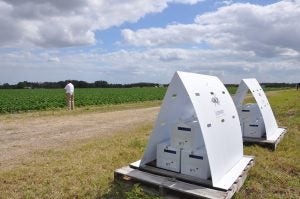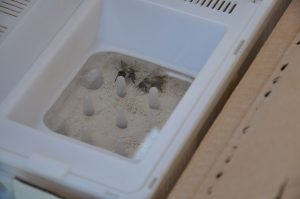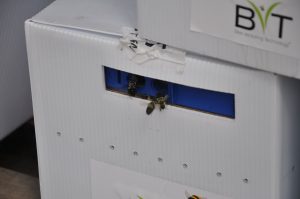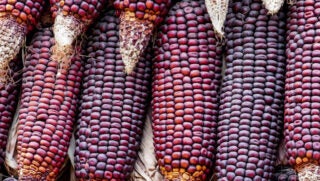PLANT CITY, Florida — Bees are being armed as soldiers in the war on plant pests, leading the charge toward sustainable farming. Farming is an endless battle against pests and pathogens, and must be waged with a careful combination of genetics, chemistry, and management. A new strategy developed by BVT (Bee Vectoring Technology) seeks to rewrite the rules about battling plant pathogens. This approach uses pollinator bees to deliver a payload that targets fungal pathogens that can limit fruit and vegetable production.
Usually, conversations about bees and pesticides conjure images of piles of dead bees and sign-wielding activists laying on the ground in bee suits. There is universal interest in protecting pollinators, as they perform important services that support food production, natural conservation, and on-farm economics. This is why the BVT approach is so exciting. Bees delivering a fungal control using the same principles they use to deliver pollen is a huge step forward in sustainability.

The effectiveness of this technology is largely linked to timing. Several fungal pathogens that affect fruit begin their infection in the flower. Fungal spores colonize the flower parts, and can later emerge as fruit-damaging infections on the farm or in the home refrigerator. That gray fuzz that wrecks your strawberries, for example, starts weeks before in the flower.
Only a couple of spoonfuls of spore dust are needed to treat an acre, and the bees can access flowers in the canopies that sprayers can miss.
The BVT process begins in the hive — in Plant City, the specially equipped hives reside are adjacent to fields of flowering strawberries. When a bumble bee heads out to forage, it weaves its way toward the hive’s exit. On the way, it walks through BVT’s proprietary dust, which clings to its furry body. The bee exits the hive, and just as it delivers dusty pollen from flower to flower, it now also delivers this fungicidal powder. (Listen to Folta’s podcast here.)
The fungicide is not a typical chemical control, but instead a fungus itself. Clonostachys (klon-o-stack-is) rosea is a parasitizing fungus, meaning it makes a living by sponging off of other fungi (update: Clonostachys rosea CR-7 was approved by the EPA for use in the U.S. in summer 2019). It occurs naturally in the environment and is relatively ubiquitous — just not necessarily in flowers. Only a couple of spoonfuls of spore dust are needed to treat an acre, and the bees can access flowers in the canopies that sprayers can miss. When a bee delivers Clonostachys spores to the flower, the fungus grows and takes up the space and nutrients needed by the strawberry pathogen. It is a benign infection that takes the place of a damaging one.


Research already has shown that when Clonostachys is present fungal disease incidence is decreased, both in the field (Cota et al., 2008) and greenhouse (Liu et al., 2002). The use of this biological control translates to better yield of marketable fruits, and perhaps a decrease in the use of chemical controls. That means lower costs for farmers, less fungicide in the environment, and lower residues on fruits. The technology is compatible with both conventional and organic production.
Crop protection against these fungal pathogens is expensive, with high costs in labor, fuel, and anti-fungal products. And the prophylactic use of a bee-delivered fungal control may inevitably decrease these costs. BVT is also developing solutions for other high-value crops. There are plans to implement the technology on blueberries, tomatoes, and sunflowers, as well as ways to use it with honey bees.
With millions of hives moving around North America to pollinate specialty crops, there may be great opportunity to have bees do double duty — providing essential pollinator services and at the same time inoculating flowers with a natural competitor of a crop-damaging fungus.
Sources:
Cota LV, Maffia LA, Mizubuti ESG, Macedo PEF, Antunes RF (2008) Biological control of strawberry gray mold by Clonostachys rosea under field conditions. Biological Control 46: 515-522
Liu W, Huang R, Owen-Going N (2002) Ability of Clonostachys rosea to Establish and Suppress Sporulation Potential of Botrytis cinerea in Deleafed Stems of Hydroponic Greenhouse Tomatoes AU – Sutton, J.C. Biocontrol Science and Technology 12: 413-425
Dr. Kevin Folta is a land-grant scientist exploring ways to make better food with less input, and how to communicate science. Bee Vectoring Technology is the focus of Folta’s Feb. 2, 2019, Talking Biotech podcast, which can be found here.



